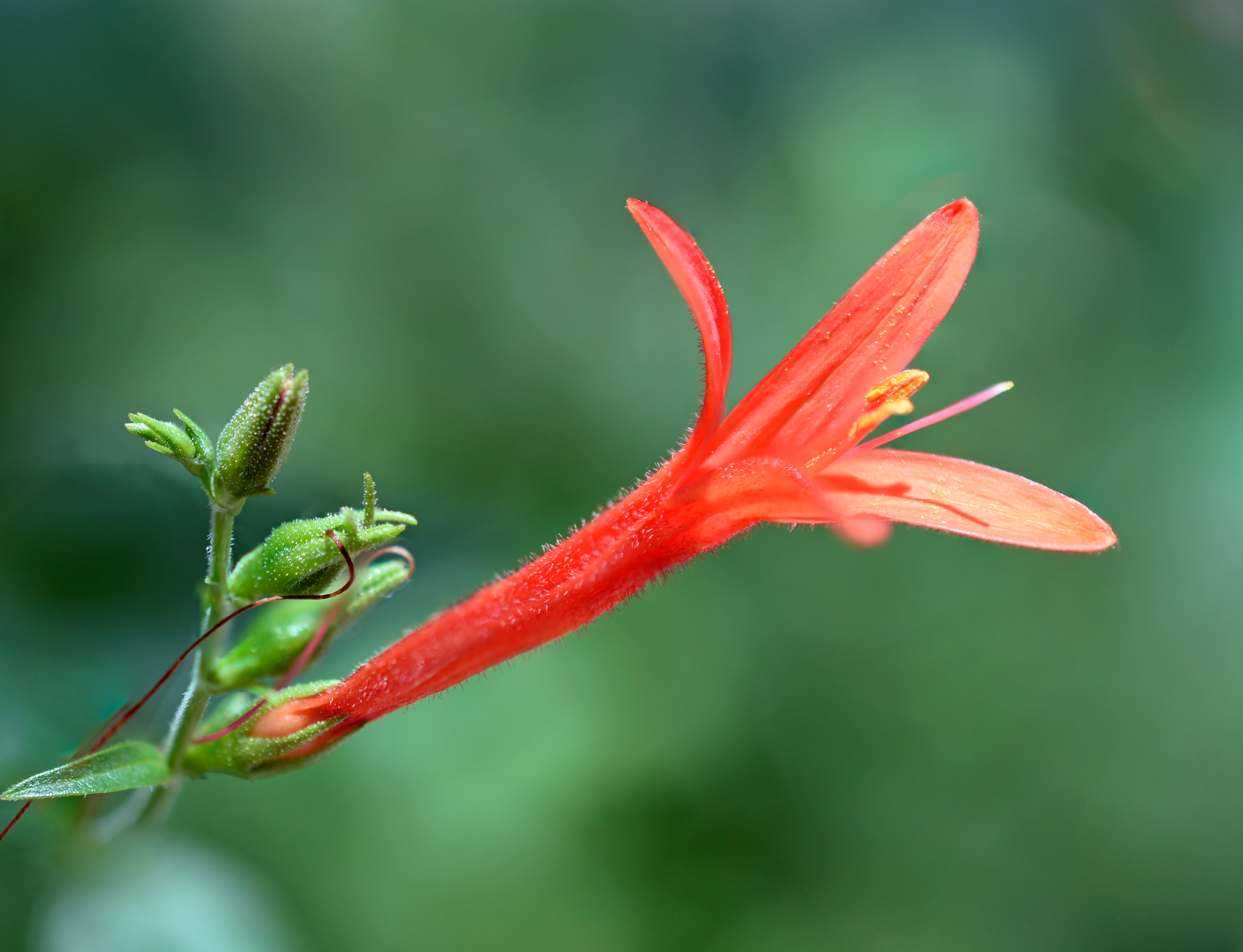Wright'S Desert Honeysuckle
(Anisacanthus quadrifidus)

Description
Anisacanthus quadrifidus is a species of flowering plant native to west and south-central Texas in the United States and adjacent northern Mexico down through the state of Oaxaca. It is an increasingly common ornamental shrub in Texas and is cultivated in other parts of the Southwestern United States. It is known by a variety of names including flame acanthus,Wright's desert honeysuckle, hummingbird bush, Wright acanthus, Wright anisacanth,Texas firecracker, Mexican flame and Wright's Mexican flame. "Wright" refers to American botanist Charles Wright who collected samples of the plant in the mid-19th century. Some sources also refer to it as muicle although this name is usually applied to the related Justicia spicigera when used as a traditional medicine in Central America. It is found on rocky and dry slopes, grasslands, xerophytic scrub and Mexican pinyon forests. It is also frequently on crop banks or in sloped arid areas at heights from 1500 to 2450 meters (4920 to 8040 ft) above sea level. It adapts well to other soils when under cultivation, however, it displays poor tolerance to frost. Anisacanthus is a genus of flowering plants in the bear's breeches family, Acanthaceae. The generic name is derived from the Greek words ανισος (anisos), meaning "unequal," and ακανθος (acanthos), meaning "thorn." Members of the genus are native to tropical and subtropical regions of the Americas. They are commonly known as desert honeysuckles, though this term is shared with the genus Ancistranthus, and is something of a misnomer as true honeysuckles (genus Lonicera) belong to the family Caprifoliaceae. Anisacanthus species are sometimes cultivated for use in xeriscaping.
Taxonomic tree:







